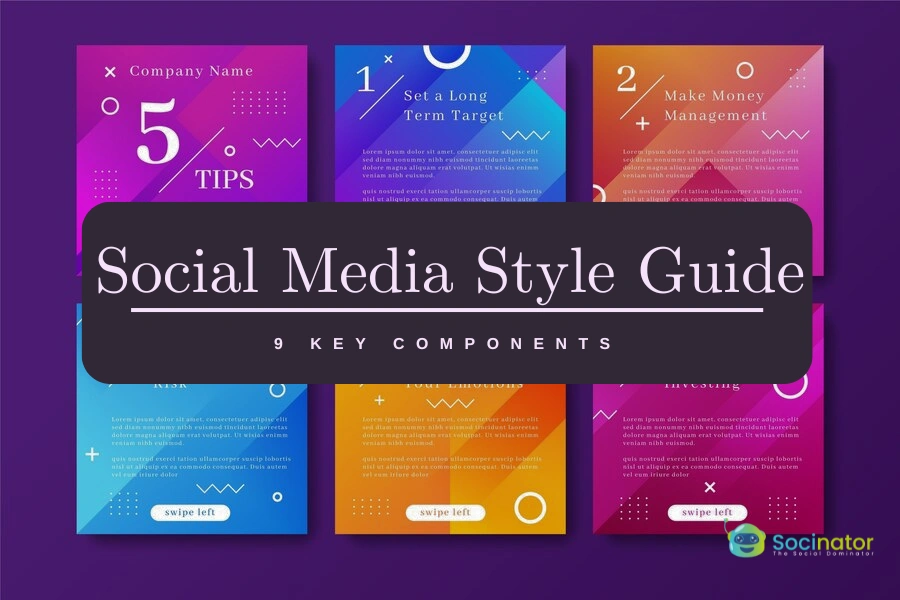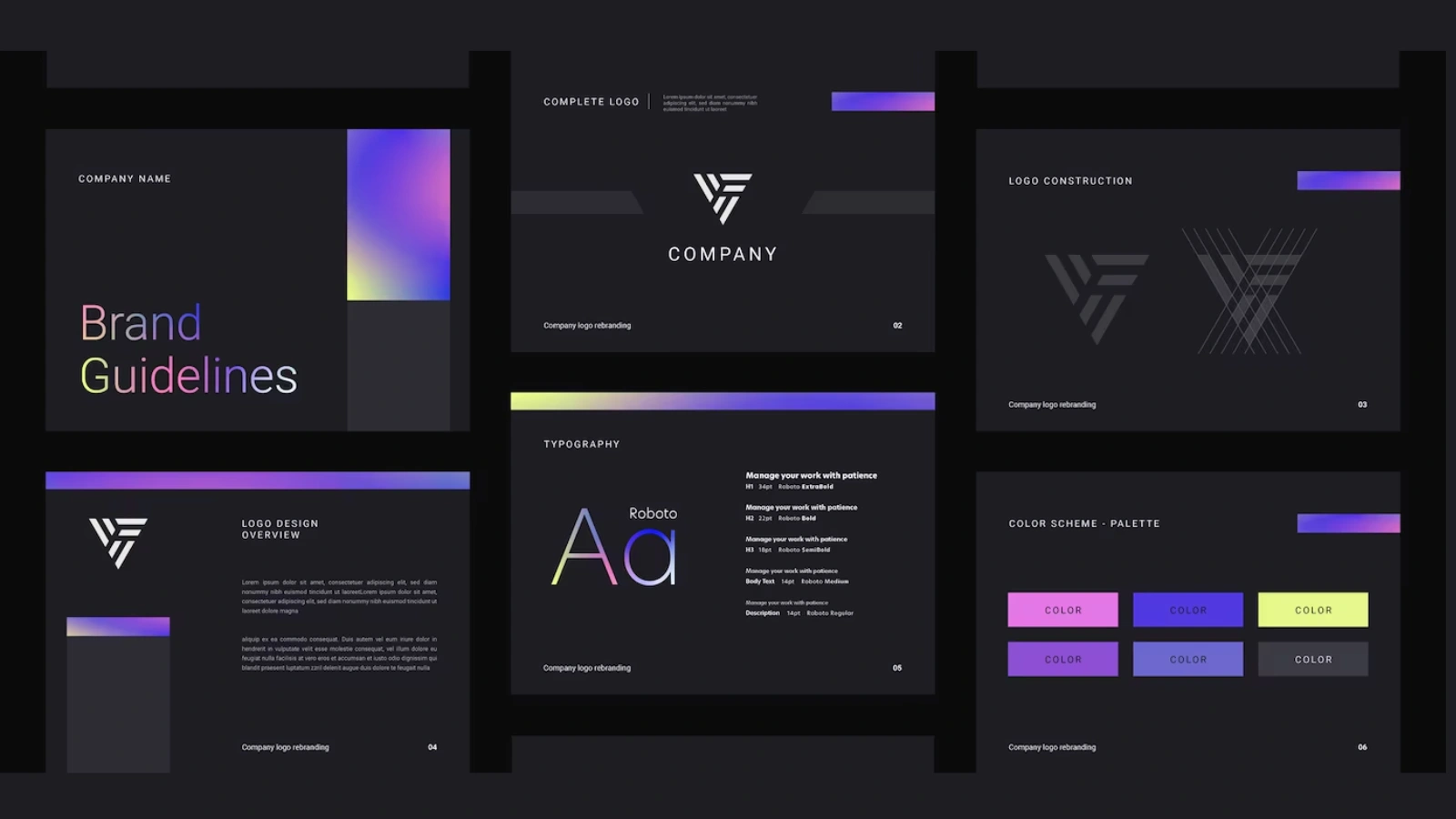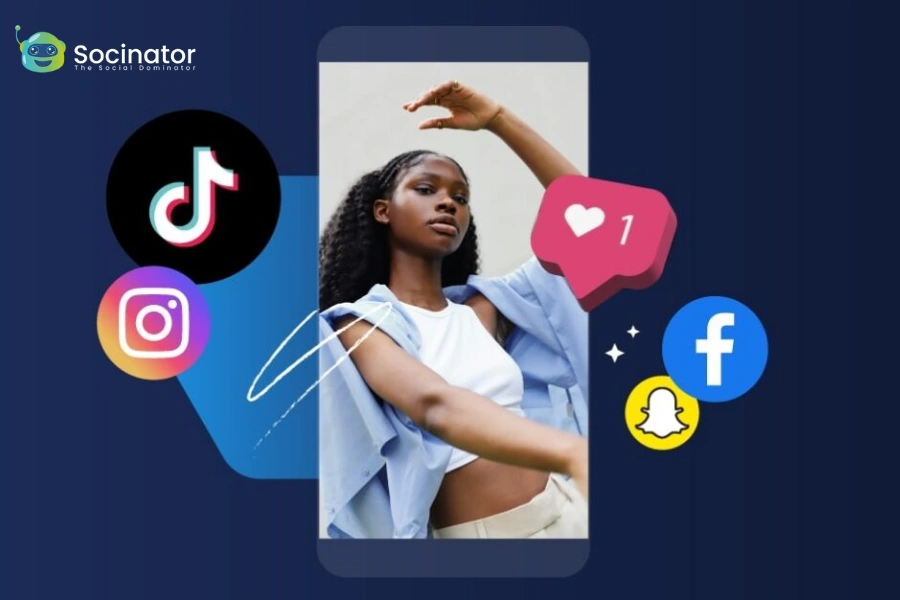Does the social media presence of your brand seem unorganized and scattered? Even with great content, a lack of consistency can keep you from building a strong, engaged audience. The key to hitting your social media targets every time lies in a well-crafted social media style guide. This guide is the secret weapon you didn’t know you needed.
A social media style guide ensures that all your posts are cohesive and align with your brand’s voice, tone, and values. It’s not just about looking good; it’s about creating a recognizable and reliable presence that your audience can connect with and trust. This guide will help you maintain consistency across all platforms, making your brand appear more professional and polished.
In this blog, we’ll explore how to create a style guide for social media and explain why it’s essential for your brand. By the end, you’ll understand how a style guide can streamline your social media efforts, enhance your brand’s image, and foster a loyal, engaged community. Get ready to take your social media branding game to the next level with a comprehensive style guide!
Hit ‘Play’ Button & Tune Into The Blog!
What Do You Mean By Social Media Style Guide?
A social media style guide is a document outlining your brand’s social media style decisions.
This covers all aspects of your brand, such as your tone of voice, logo, and color scheme, including your usage of hashtags and emojis. Put otherwise, these are social media brand guidelines specifying how you should represent your brand on social media.
Why Do You Need a Social Media Style Guide?
You might be wondering, “Why all the fuss about a style guide?” Let me break it down for you.
Help You Build Trust With Audience
Creating content for social media platforms becomes much simpler when your style guide clearly defines your voice, tone, and visual style, making it easy for your followers to recognize your content from any source. Everything in your content seems to be from the same source.
A solid social media style guide guarantees regular discussion of your brand’s offerings and product functionality. This increases consumer recognition and trust, positioning you as the go-to business when your target market is ready to buy.
Keeps Your Image and Voice Consistent
In social media, consistency is essential. You must decide how your brand “speaks” online if you want your voice and image to be consistent.
Everything about your image and video content must be consistent. It includes using consistent fonts for captions and thumbnails, maintaining uniformity in infographic designs, and adhering to brand colors across all visual content. This consistency helps strengthen brand recognition and reinforces the brand’s visual identity among followers and audiences across different platforms.
Helps Your Team Do Their Jobs
A brand’s social media content must convey a cohesive tone, even if several individuals produce different elements. Although the style of your Instagram videos will differ from that of your LinkedIn posts, the general vibe of your brand should still feel familiar.
A well-defined style serves as the guide for everyone involved in producing your social media content. It enables team members to operate separately toward a common objective.
Moreover, a strong social media style guide facilitates onboarding for new staff and supervisors. It guarantees that organizational knowledge is retained by your team even if team members depart or take on other responsibilities. Tools like Socinator can further streamline your social media management, automating tasks to ensure consistency and efficiency across all your platforms.
How To Create a Style Guide for Social Media?
To establish a social media style guide from scratch, you must first assess the present status of your social media strategy, document your activities, and include a great deal of information on the content creation process that you will be using moving forward. Here’s how to get going.
Step 1: Establish your brand identity
This is the self-knowledge portion. How does your brand feel? What are your beliefs? Reaching this is similar to setting your style guide’s compass.
Step 2: Consider Your Target Audience
With your social media material, who are you hoping to reach? Who are members of your fan club? Which ones are their favorites? With what kind of content do they engage? This is the secret to making your social media brand guidelines unique and appealing to your target audience.
Step 3: Be Specific
When discussing the finer aspects, details count. Your social media style guide should be as detailed as possible, addressing everything from hashtag usage to grammar rules to the tone of your material.
Also Read:
13 Outstanding Ideas For Social Media Post Design Ideas In 2024
Social Media Branding Guidelines: All You Need To Know
9 Things To Include In Your Social Media Style Guide
Each company has a style guide specific to its brand and consists of many elements. However, some components are quite common. Ensure that the following components are included in your social media style guide:
Your Social Media Profiles
Let’s begin with the fundamentals. To start, all of your profiles should be mentioned in your social media branding standards. Always mention your secondary profiles as well. Therefore, don’t ignore Snapchat, Reddit, or TikTok in your style guide if your business is present on that social media platform.
Remember the conventions for profile names as well. These principles will be helpful as your brand launches on the newest, most popular channels. There are always going to be new platforms to join.
Formatting
Certain brands have a format that they follow when posting links, status updates, or other kinds of content. For example, posts from X may have a title, a link, and a hashtag. Alternatively, instead of using the description on an Instagram post, your brand may include a list of all of its hashtags in the first remark.
Emoji usage should also be covered in post formatting. Specify appropriate emojis, limit frequency per post, and consider cultural implications for consistent, effective communication.
You can also specify the location of your call-to-action (CTA) in the captions. For instance, some brands choose to link to their posts in the LinkedIn comments section rather than the post itself. Make a note of your decision in your social media brand guidelines.
Language and Grammar
Style guides for language and grammar aren’t limited to your website. Posts on social media should stick to the same guidelines. These requirements extend beyond your usage of AP Style. It should address topics like abbreviations, the usage of exclamation points, brand terminology, and other elements that contribute to the coherence of your writing.
Do you use any terms, acronyms, abbreviations, or industry jargon in your work but not on social media? Which terms do you always capitalize or stay away from completely? Make a note of these in your guide. The language and grammar section should also cover regional nuances and inclusive language.
Depending on the inclinations of your brand, get as specific as you like in this section. Many of the guidelines that apply to your website or blog’s grammar manual might also apply to your social media style guide.
Voice and Tone
Your social media brand voice creates familiarity and sets your company out from the competition. Consistency across all platforms is crucial, just like it is for any other aspect of your business.
However, you can modify your terminology slightly depending on the social platform.
Your social media persona should reflect your professional behavior, which may be deeper than that of your closest pals. TikTok is more informal and low-key, whereas LinkedIn is more polished and professional. That being said, your social media content should still be authentically you, no matter the platform. Establishing a balance is crucial.
What does your voice mean to you? Consider it in this manner. How would your brand sound if it were a real person? And what impression would you like to leave on others?
A few of the characteristics could be a mix of Friendly, smart, compassionate, confident, helpful, sarcastic, casual, bold, energetic, cheerful, etc.
Examine your previous work to discover your social media voice. Whether it’s a blog post, advertisement content, or other messaging, focus on the tone and emotion. What struck a chord with your viewers? Take inspiration from what other firms are doing on social media, but consider how uniquely you can make it your own.
Hashtags
Clearly define any hashtags associated with a campaign or brand, including how your team should utilize them in social media post designs, to keep everything organized.
Consider the channel and the intent when crafting branded hashtags. Consistently use your basic branded hashtag to establish a connection with your audience.
Many companies include branded hashtags in their social media profiles, which is beneficial if your social media strategy uses user-generated content.
Multimedia Standards
Your social media style guide example should establish guidelines and standards for any photographs or videos you share, as most social networks are heavily visual.
Your guide will cover the following two main categories of visuals:
- Post-shared images, GIFs, graphics, or videos
- Header graphics, cover photographs, and profile images
It is almost certainly well-planned when an Instagram feed of a company looks well-curated or themed.
In your style guide, provide an outline of:
- Logo colors
- Fonts used in graphics
- Color choices that are appropriate for each network
- Pictures of your staff and office
- Logos
These elements might have already been mentioned in your overall brand style by your agency or design and creative team for your brand. But for particular social campaigns or platforms, you might have to stray from the guidelines a little.
Social Customer Care Policies
When clients interact with you, share your material, or ask inquiries, how should your staff answer? How do you respond to compliments or criticism? How soon, too? Putting this in writing through a style guide will promote cohesiveness and keep everyone in the know.
Responses must be consistent even if multiple team members are in charge of managing your profiles. For precision and—you guessed it—consistency, think about compiling a library of unique, on-brand responses.
Employee Advocacy
One low-cost strategy to increase the reach of your company’s social media content is to encourage employee engagement. Additionally, it can help humanize your brand by providing a face that your audience can relate to and trust.
While some team members could be naturally adept at social media, others might require more direction. Everybody on your team will be at the top of their social game if you incorporate a social media policy with particular dos and don’ts for employees into your style guide.
Guidelines for promoting, interacting with, and representing the firm on social media should be included in your social media style guide example. These guidelines will assist staff in enhancing your brand while establishing their brands and safeguarding your business from issues related to privacy, security, or public relations.
Legal Questions
The last thing you want for a social media post to cause legal problems for your business. If your industry is governed by rules and laws, include social media compliance advice in your social media style guide. For example, multiple government organizations have policies on what they can and cannot post on social media.
It’s also important to remember some broad legal issues, such as copyright infringement, unauthorized image reposting, and AI use. For instance, entering data into AI technologies may jeopardize the intellectual property rights of your business. Thus, think about including an AI use policy in your style manual.
So, these are some key components that need to be present in a social media style guide. After creating a style guide, only one thing is essential, i.e., posting your content and increasing engagement. For this, you can also use various social media automation software like Socinator. These tools provide post-scheduling and repost features, helping you raise your social branding on platforms. Let’s learn more about this software in detail.
Socinator – The Best Social Media Automation Software
Socinatoris an all-in-one social media automation solution using which you can manage all your marketing campaigns in a single dashboard. This automation tool provides an easy-to-use interface for streamlining the workflow of businesses.
From post-scheduling to social listing and providing analytics insights, Socinator offers a wide range of features that allow marketers to create and manage automated campaigns more efficiently.
For a social media style guide, Socinator offers a variety of features.
Auto-Publish and Repost
Socinator eliminates the need for manual posting. You can schedule your post and ensure that the content is posted at the desired time automatically. After posting, you can also repost the best-performing videos to increase your visibility on social media platforms.
Record Activity Frequency and Get Reports
You can track the automation activities performed through your linked social media accounts and monitor their frequencies. Also, you can get detailed insights into profile engagement, post-performance metrics, and lead targeting.
Automatic Follow, Unfollow, Like, & Comments
This social media automation tool allows you to engage with your audience through automated likes and comments. It prevents manual, time-consuming writing and posting work. You can also auto-follow and unfollow relevant users through Socinator without taking extra time from your busy schedule.
Extract Targeted Users
You can find & extract the targeted audience accounts, along with those already engaged with you. It helps to build a more engaging and long-lasting community, allowing you to master your social media branding strategy.
Final Thoughts
A social media style guide is your roadmap to a consistent, engaging online presence. By defining your brand’s voice, visuals, and content guidelines, you can build trust with your audience and maintain professionalism across platforms.
With the help of tools like Socinator, managing and automating your social media efforts becomes simpler, allowing you to focus on creating meaningful connections with your followers.
So, don’t overlook the power of a well-crafted social media style guide in elevating your brand’s online presence and driving success in the digital world. We hope you now have ample knowledge about the social media style guide. Please use the comment box below for any further queries.











